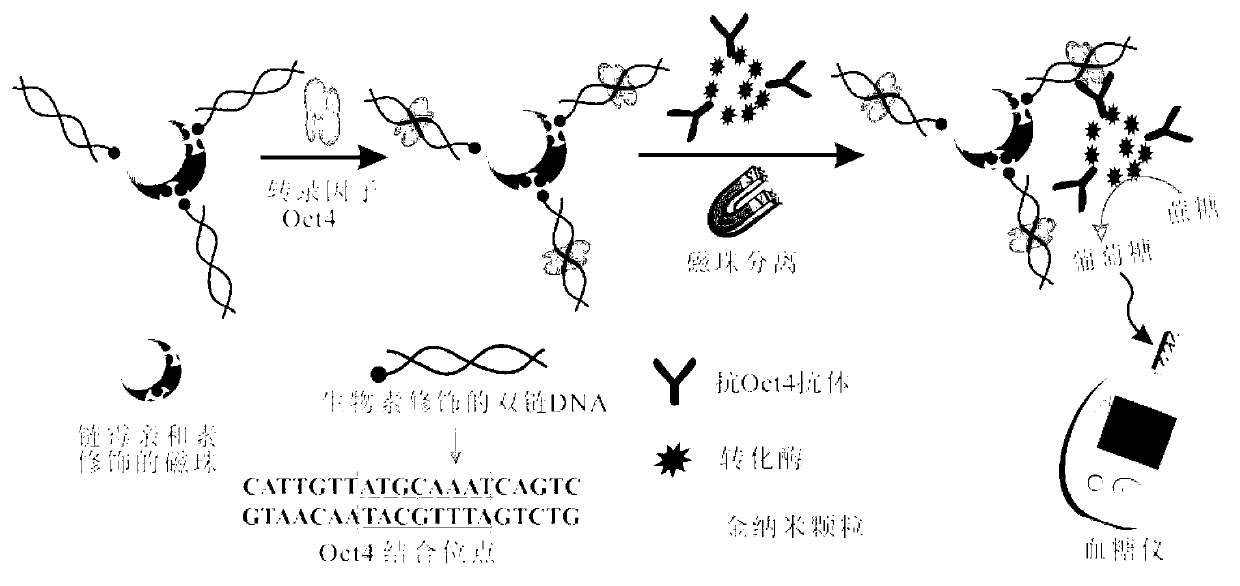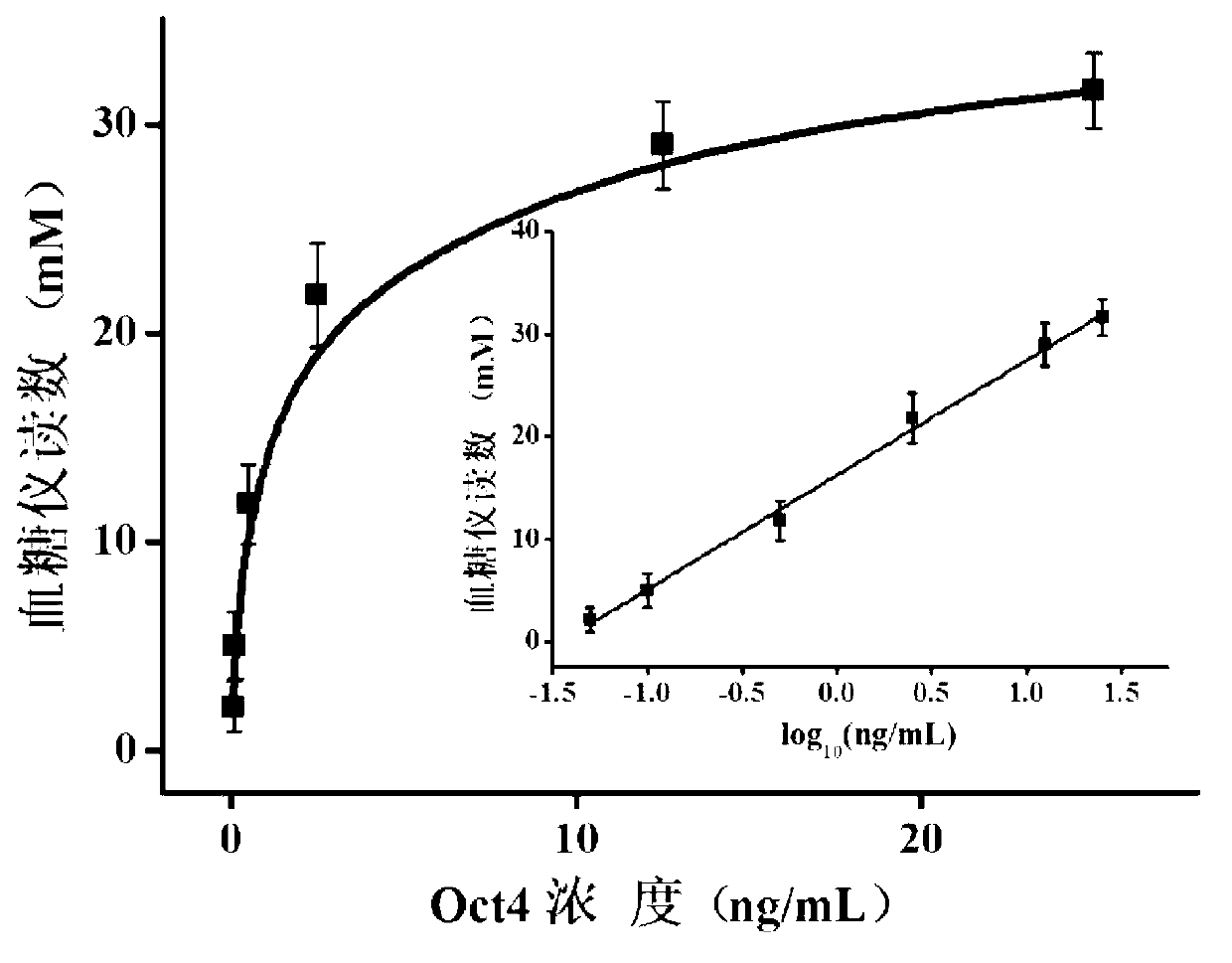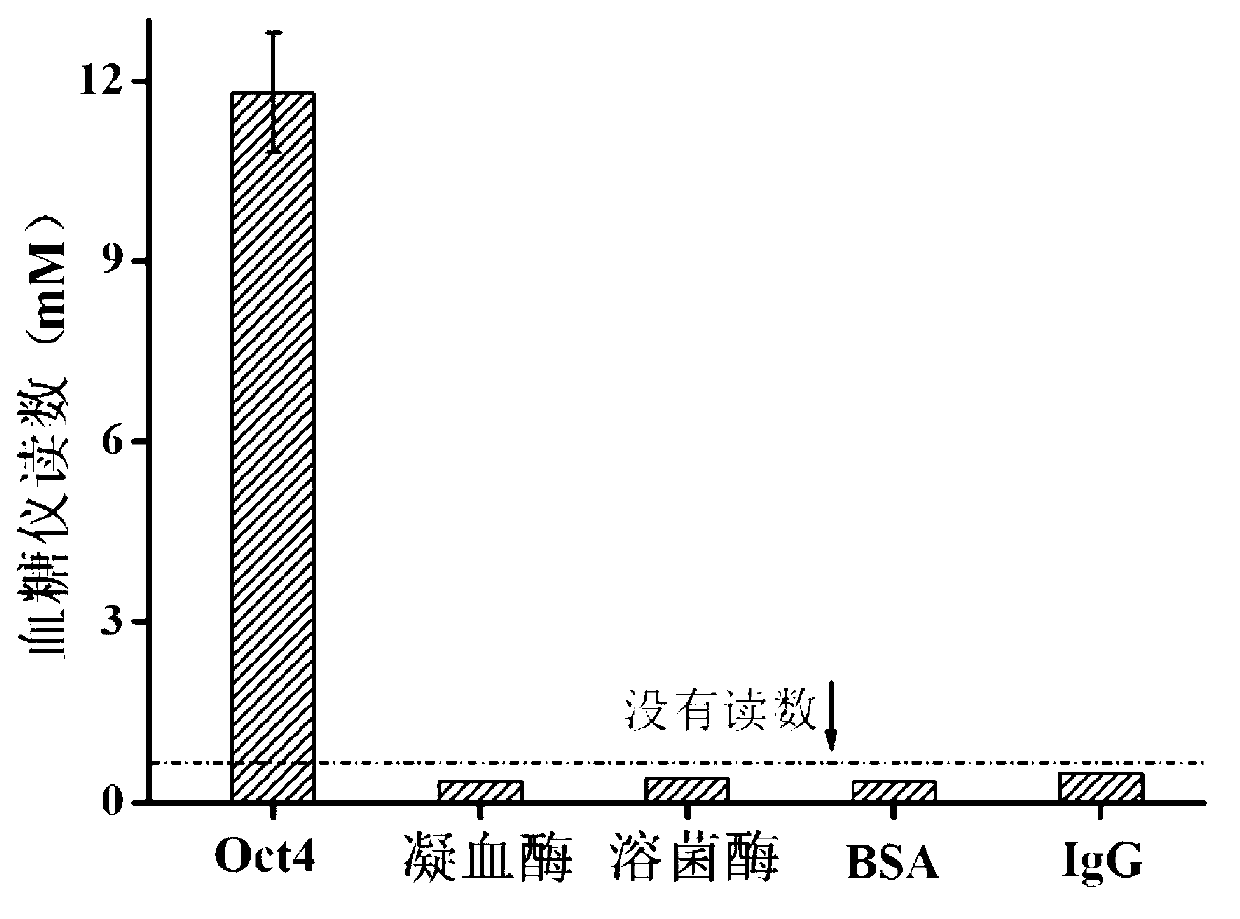Method for detecting transcription factor by biosensor and glucometer
A biosensor and transcription factor technology, applied in the biological field, can solve problems such as difficult to meet quantitative needs, difficult to popularize the application of ordinary people, expensive instruments, etc., and achieve the effects of rapid and convenient detection, wide application range and high sensitivity
- Summary
- Abstract
- Description
- Claims
- Application Information
AI Technical Summary
Problems solved by technology
Method used
Image
Examples
Embodiment 1
[0024] Embodiment 1: Utilize the method described in the present invention to detect transcription factor Oct4
[0025] The detection principle of this embodiment is as follows figure 1 shown. Biotin-modified double-stranded DNA (double-stranded DNA, dsDNA) was immobilized on streptavidin (SA)-modified magnetic beads (magneticbeads, MBs) (through the interaction of SA-biotin), The excess DNA was removed by magnetic bead separation or washed with water to obtain the SA-MBs-biotindsDNA complex. The sequence of the double-stranded DNA is shown in Table 1. The double-stranded DNA sequence contains the binding site of the transcription factor Oct4 (the underlined part in the double-stranded DNA sequence in Table 1).
[0026] Table 1
[0027] name
dna sequence
5'-biotin-CATTGTT ATGCAAAT CAGTC-3'
SEQ ID NO:1
3'-GTAACAA TACGTTTA GTCAG-5'
SEQ ID NO:2
[0028] Then add transcription ...
Embodiment 2
[0035]Embodiment 2: Using the method of the present invention to detect transcription factor Oct4
[0036] The detection principle of this embodiment is as follows figure 1 shown. Immobilize biotin-modified double-stranded DNA (double-stranded DNA, dsDNA) (through the interaction of SA-biotin) on streptavidin (streptavidin, SA)-modified microtiter plate or electrode), and water Wash to remove excess DNA to obtain SA-microplate / electrode-biotin dsDNA complex. The sequence of the double-stranded DNA is shown in Table 1 (see Example 1).
[0037] Then add transcription factor Oct4 to SA-microplate / electrode-biotin dsDNA, it will bind to double-stranded DNA to form SA-microplate / electrode-biotin dsDNA-Oct4 complex, wash with water to remove excess Oct4 , then add anti-Oct4 antibody (anti-Oct4antibody, Ab) and invertase (invertase) modified gold nanoparticles (gold nanoparticles, AuNPs), then the Ab / invertase-AuNPs complex is immobilized on the enzyme label through antibody-Oct4 ...
Embodiment 3
[0041] Example 3: Detection of transcription factor Oct4 at different concentrations using the method of the present invention
[0042] Prepare standard solutions of transcription factor Oct4 at concentrations of 0.05ng / mL, 0.1ng / mL, 0.5ng / mL, 2.5ng / mL, 12.5ng / mL and 25ng / mL, and store at room temperature.
[0043] Add different concentrations of Oct4 solutions to the reaction system described in Example 1, react fully, and finally take 5 μL of the supernatant for detection with a blood glucose meter, and record the reading of the blood glucose meter after 25 seconds.
[0044] From figure 2 It can be seen from the detection results that when Oct4 of 0.05ng / mL exists, the corresponding reading can be read on the blood glucose meter, indicating that the detection limit of Oct4 by the biosensor of the blood glucose meter is 0.05ng / mL, which is higher than that of the traditional ELISA method. The sensitivity is more than 20 times higher. Moreover, as the concentration of Oct4 ...
PUM
 Login to View More
Login to View More Abstract
Description
Claims
Application Information
 Login to View More
Login to View More - R&D
- Intellectual Property
- Life Sciences
- Materials
- Tech Scout
- Unparalleled Data Quality
- Higher Quality Content
- 60% Fewer Hallucinations
Browse by: Latest US Patents, China's latest patents, Technical Efficacy Thesaurus, Application Domain, Technology Topic, Popular Technical Reports.
© 2025 PatSnap. All rights reserved.Legal|Privacy policy|Modern Slavery Act Transparency Statement|Sitemap|About US| Contact US: help@patsnap.com



